Hyaluronic acid (HA) and vitamin C (ascorbic acid) both have a number of health benefits, several of which overlap. They both help reduce the effects of aging in your skin, and they both can enhance your body’s healing capabilities. Supplementing with both together, topically or orally, can maximize the benefits of each.
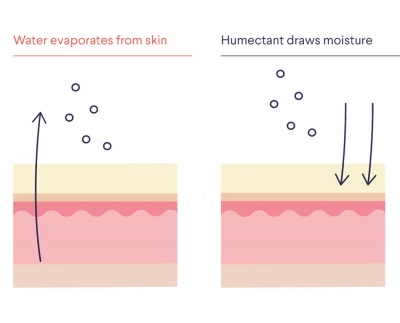
”Skin aging is also associated with loss of skin moisture. The key molecule involved in skin moisture is hyaluronan or hyaluronic acid (HA)” (NIH.gov)

What is Hyaluronic Acid?
Hyaluronic acid, also called hyaluronate or hyaluronan, is a type of glycosaminoglycan (GAG).1 GAGs are long chains made of multiple sugar molecules linked together. They are water-soluble and elastic. Your body uses GAGs for structural support and as lubricants. Cells secrete HA and other GAGs as a part of the extracellular matrix.1 This matrix is a network of proteins and other structural molecules that give strength to the tissues in your body and provide a scaffold for your cells to attach to.
Our Recommendation: InstaNatural's Hyaluronic Acid Serum offers the best solution to delivering instant relief to even the driest patches of skin on your face or body that may require a hydrating spot treatment. Contains Vitamin C and Green Tea Extract offer antioxidant support to defend the skin from environmental aggressors

Hyaluronic Acid and Vitamin C Both Have Anti-Aging Properties
Half of all the HA in your body is located in your skin. Like collagen, HA helps keep your skin strong and flexible. It is also important for keeping your skin hydrated by holding moisture in. As you age, your skin cells start producing less and less HA. When this happens, your skin loses its integrity and becomes less taut and flexible.2 Supplementing with HA either orally or topically can help restore your skin and reduce signs of aging.
The anti-aging benefits of vitamin C, or ascorbic acid, are well known. Vitamin C has many important functions throughout the body and is a very effective antioxidant. It efficiently neutralizes reactive oxygen species that cause damage to cells and structural molecules in your body. Supplementation with vitamin C can reduce these harmful oxygen radicals and other molecular markers of aging. It can also improve skin elasticity and reduce wrinkles.2
For the maximum benefits for your skin, look for lotions, creams, or moisturizers that contain HA and vitamin C together.1 Alternatively, you can use a vitamin C product and an HA product in order to get their compound effects.
Our Recommendation: COUI SUPER C SERUM is the single most potent anti-aging vitamin c for face. Contains Epidermal Growth Factor (EGF): a proven healing agent rarely found in vitamin C serums..

Hyaluronic Acid and Vitamin C Promote Healing Together
As an integral structural component, HA is important for wound-healing and rebuilding damaged tissues.3 It forms the fiber networks that holds cells and tissues together along with other structural molecules, such as collagen. Collagen and HA are especially abundant in tissues that need to be tough yet flexible, such as your skin, joints, and tendons. If you are injured, your body needs plenty of HA and collagen to close wounds, repair tendons, and heal joints.
Vitamin C is a coenzyme for collagen synthesis. This means that enzymes in your body need vitamin C in order to make new collagen proteins. Supplementing with vitamin C can increase collagen production in your body to facilitate healing. Topical vitamin C, which can be found in cosmetics like lotions and creams, can help your skin heal better.4 You can also take it orally to help with minor internal injuries, such as sprained joints.
Some recent studies have shown that vitamin C and HA are especially effective in promoting healing for skin and tendons, when used in combination.5, 6
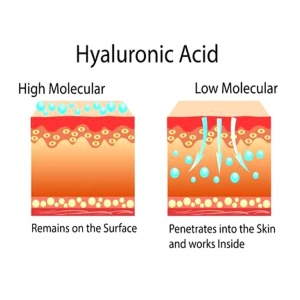

Hyaluronic Acid and Vitamin C Help Manage Arthritis
The powerful antioxidant properties of vitamin C make it good for reducing inflammation in the body. This is especially useful for diseases that involve high levels of inflammation, such as arthritis. In arthritis, constant inflammation causes swelling and tissue damage in affected joints. Reducing inflammation is essential for getting arthritis under control.
Vitamin C and HA have a synergistic effect on chondrocytes, the cells that form the cartilage in your joints. Together, they have an increased ability to reduce inflammation and damage to cartilage proteins.7 With their healing properties, the two nutrients together also help promote regeneration of joint tissues.
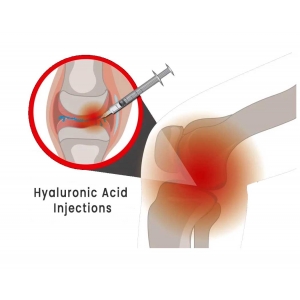
[1] A Fallacara, E Baldini, S Manfredini, and S Vertuani. 2018. "Hyaluronic Acid in the Third Millennium." Polymers. 10(7):701. https://www.ncbi.nlm.nih.gov/pmc/articles/PMC6403654/
[2] E Papakonstantinou, M Roth, and G Karakiulakis. 2012. "Hyaluronic acid: A key molecule in skin aging." Dermato-endocrinology. 4(3):253-258. https://www.ncbi.nlm.nih.gov/pmc/PMC3583886/
[3] WY Chen and G Abatangelo. 1999. "Functions of hyaluronan in wound repair." Wound Repair Regen. 7(2):79-89. https://www.ncbi.nlm.nih.gov/pubmed/10231509
[4] L Maione-Silva, EG de Castro, TL Nascimento, ER Cintra, LC Moreira, BAS Cintra, MC Valadares, and EM Lima. 2019. "Ascorbic acid encapsulated into negatively charged liposomes exhibits increased skin permeation, retention and enhances collagen synthesis by fibroblasts." Sci Rep. 9(1):522.
[5] H Niiyama and Y Kuroyanagi. 2014. "Development of novel wound dressing composed of hyaluronic acid and collagen sponge containing epidermal growth factor and vitamin C derivative." J Artif Organs. 17(1):81-7. https://www.ncbi.nlm.nih.gov/pubmed/24292853
[6] YM Dincel, O Adanir, Y Arikan, AK Caglar, SC Dogru, and YZ Arslan. 2018. "EFFECTS OF HIGH-DOSE VITAMIN C AND HYALURONIC ACID ON TENDON HEALING." Acta ortopedica brasileira. 26(2):82-85. https://www.ncbi.nlm.nih.gov/pmc/articles/PMC6032621/
[7] TL Huang, CH Yang, G Yanai, JY Liao, S Sumi, and KC Yang. 2018. "Synergistic effect of l-ascorbic acid and hyaluronic acid on the expressions of matrix metalloproteinase-3 and -9 in human chondrocytes." J Biomed Mater Res B Appl Biomater. 106(5):1809-1817. https://www.ncbi.nlm.nih.gov/pubmed/28914997
-
Best Hyaluronic Acid - Benefits & Treatment
By Dr. KarenDecember 28, 2021 -
Hyaluronic Acid Foods
By Dr. AnnaAugust 14, 2022 -
Sodium Hyaluronate
By Dr. AnnaJanuary 4, 2022 -
Hyaluronic Acid for Acne
By Dr. AnnaDecember 17, 2021
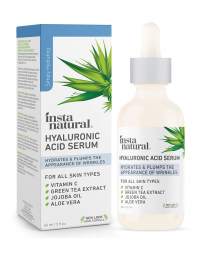

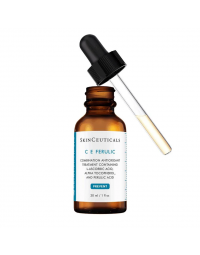

Search the blog
Article Categories
- All Articles (95)
- Rating Charts (1)
- Beauty & Skincare (17)
- FAQ (0)
- Hair Care (9)
- Health & Wellness (12)
- Anti-Aging (4)
- Kid's Health (0)
- Makeup (2)
- Men's Health (2)
- Oral Care (3)
- Sunscreen (7)
- Skin Tools & Treatments (10)
- Supplements (26)
- Videos (0)













